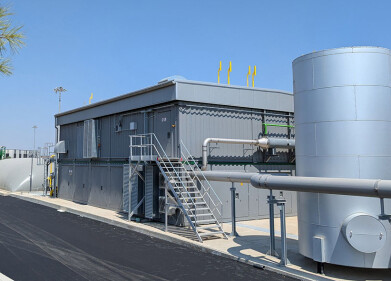Air clean up
Coast Guard Hunt for Alaska Methane, Carbon Dioxide Sources
Dec 17 2009
Recent observations have suggested that the air above Alaska may already hold the first signs of a regional increase in greenhouse gas emissions that could contribute to climate change around the globe.
To learn more about the region’s emissions, NOAA’s Earth System Research Laboratory in Boulder, Colo., has teamed up with the U.S. Coast Guard at Kodiak Island. The two partners are flying NOAA air-sampling devices aboard a Coast Guard C-130 aircraft conducting flights over the state through November.
Scientists will search for natural sources of methane and carbon dioxide—the two most important heat-trapping gases—as well as methane sources from human activities, such as oil drilling in Prudhoe Bay. Gathered over three seasons, the data will help NOAA map out natural emissions sites, estimate their outflow, and set benchmarks for future changes in a warming world.
“North of the Brooks Range, the tundra is not yet melting, but south of the range, partial melting is already occurring. The south will give us clues to what’s likely to happen north of the range in the coming years,” said Colm Sweeney, of NOAA’s Earth System Research Laboratory (ESRL). Sweeney is head of a NOAA aircraft project that samples greenhouse gases around the country. NOAA ESRL monitors the gases from 60 sites worldwide.
Billions of tons of carbon are buried in the frozen Arctic tundra, now heating up because of human-caused climate change. In the future, will the warming tundra dry out, exhaling large amounts of heat-holding carbon dioxide? Or will melting ice form pools and lakes, allowing microbes to feast on buried organic matter, burping up huge amounts of methane? Only the data will tell, say the scientists.
“It’s important to locate natural sources and measure how much methane and carbon dioxide are being released now so we can watch for signs of increasing emissions,” said Sweeney. “Methane is 25 times more powerful than carbon dioxide as a greenhouse gas, though its lifetime in the atmosphere is significantly shorter. We’re especially interested in those sources.”
When related climate affects are taken into account, methane’s overall climate impact is nearly half that of carbon dioxide.
Earlier research documented large “bubbles” of methane near Arctic lakes. Satellite sensors revealed similar lakes in other areas, but whether those lakes produce methane is unknown. Last year research vessels in the Arctic Ocean observed methane vents releasing the gas from the ocean floor. Perhaps these vents have been there all along, undiscovered, say the scientists, or they could have developed recently.
“Recent observations could be isolated cases or part of a vast regional change in emissions that could accelerate climate warming to a more dangerous pace. We don’t know yet,” said Sweeney. “We’re eager to find out.”
"So far profiles north of the Brooks range indicate significant enhancements in methane emissions near the surface," said Sweeney, "but it’s uncertain whether those are local emissions from human activities or outgassing from natural sources."
Events
May 18 2025 Algiers, Algeria
23rd International Water Management Exhibition
May 20 2025 Prague, Czech Republic
Singapore International Water Week Spotlight 2025
Jun 23 2025 Singapore
Jun 25 2025 Sao Paulo, Brasil
Jul 02 2025 Bangkok, Thailand














